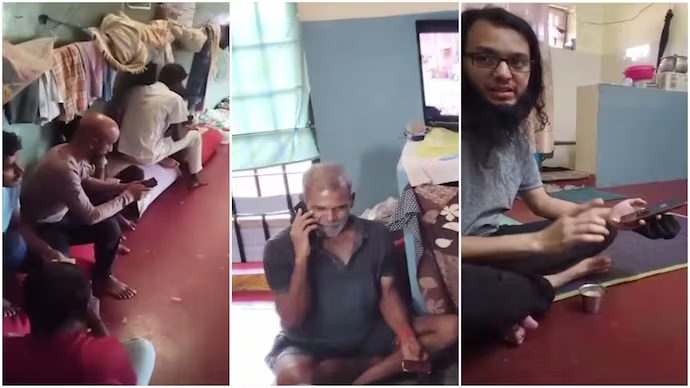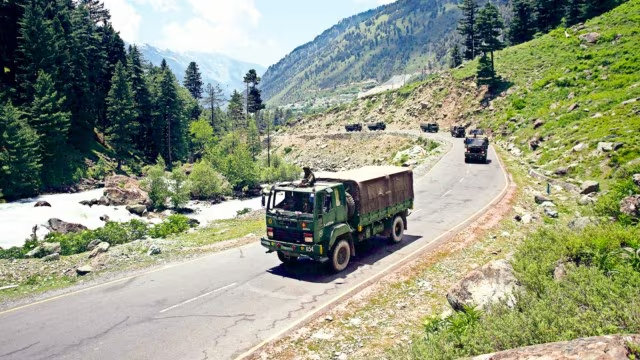The Emergency Response Integrated Control Room (ER-ICR), National Emergency Management Database Lite 2.0 (NDEM Lite 2.0), and the Assam Flood Hazard Zonation Atlas.
These instruments seek to enhance immediate disaster response, collaboration, and flood readiness by utilizing satellite information and digital mapping.

India's Susceptibility to Disasters
Due to its distinct geo-climatic conditions, India has been susceptible to natural disasters.
Flooding, drought, hurricanes, quakes, and landslips have been frequent occurrences.
Approximately 58.6% of the nation is vulnerable to earthquakes, more than 12% faces the threat of floods and riverbank erosion, and 68% of arable land is at risk of drought.
India's Strategy for Managing Disasters
The Disaster Management Act of 2005 establishes the legal and institutional framework necessary for the efficient handling of disasters.
The National Disaster Management Authority (NDMA) developed the National Disaster Management Plan (NDMP) in 2016 and updated it in 2019.
NDMP includes national obligations in Disaster Risk Reduction (DRR) related to the three key post-2015 Global Frameworks: the Sendai Framework for Disaster Risk Reduction (SFDRR), the Sustainable Development Goals (SDGs), and the Paris Agreement on Climate Change, along with the Prime Minister’s 10-point Agenda.
The Government of India has likewise sanctioned Rs. 1000 Crore National Landslide Risk Mitigation Programme that encompasses the execution of landslide risk reduction projects in 15 States, including Kerala.
Aapda Mitra Scheme has been launched, training 1,00,000 community volunteers in disaster rescue across 350 multi-hazard disaster-prone districts, including all States/UTs.
Advancement
India has demonstrated significant progress in results, for instance, no fatalities during Cyclone Biparjoy, in contrast to 10,000 deaths from the 1999 Odisha super cyclone.
Budget allocations saw a substantial rise: SDRF grew from ₹38,000 cr to ₹1.44 lakh cr; NDRF increased from ₹28,000 cr to ₹84,000 cr; total expanded from ₹66,000 cr to ₹2 lakh cr.
A National Disaster Risk Management Fund of ₹68,000 crore has been established.
Initiation of Yuva Aapda Mitra program with ₹470 crore to educate 1 lakh volunteers (20% female).
India’s systems for early warnings, predictions, and public awareness have significantly enhanced.
Environmental preservation was highlighted as crucial for enduring disaster management, with India spearheading efforts such as Mission LiFE, the International Solar Alliance, and the Coalition for Disaster Resilient Infrastructure (CDRI).
Problems and Worries
Even with advancements in response ability, a significant deficiency in long-term resilience remains.
The disasters in Uttarakhand (2021) and Himachal Pradesh (2024) underscore the necessity for recovery initiatives that strengthen communities and create robust infrastructure.
Dependence on central agencies can diminish local capabilities.
Environmental sustainability is frequently neglected in relief efforts, resulting in lasting problems such as pollution and resource contamination.
Recommendations and Next Steps
India's disaster management system has significantly progressed, transforming into a thorough framework that encompasses prevention, mitigation, preparedness, response, recovery, and reconstruction stages.
India's extensive coastline, at risk from cyclones and tsunamis, necessitates the incorporation of ecosystem-based disaster risk reduction (DRR) into policy.
Solutions rooted in nature, like mangrove planting and wetland rehabilitation, provide both protective and ecological advantages.

Aligning disaster response with health and environmental emergencies can enhance effectiveness.
Equipping local leaders with resources and training can boost autonomy and diminish reliance.
Sustainable housing and improved waste disposal must be prioritized.






.webp&w=256&q=75)






.webp&w=256&q=75)

